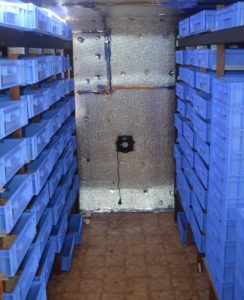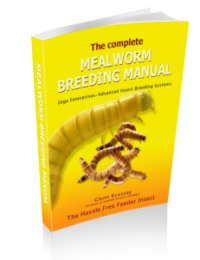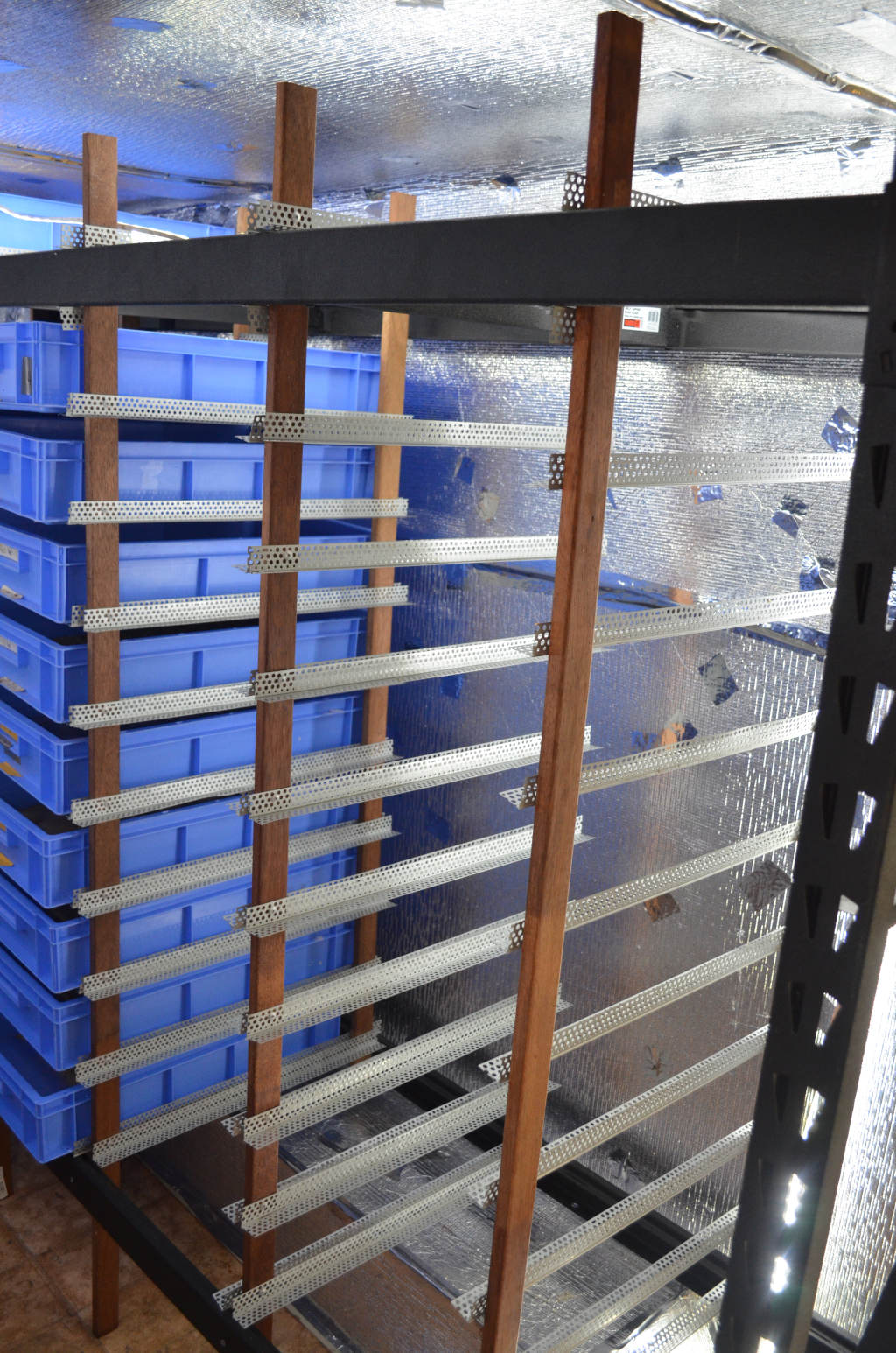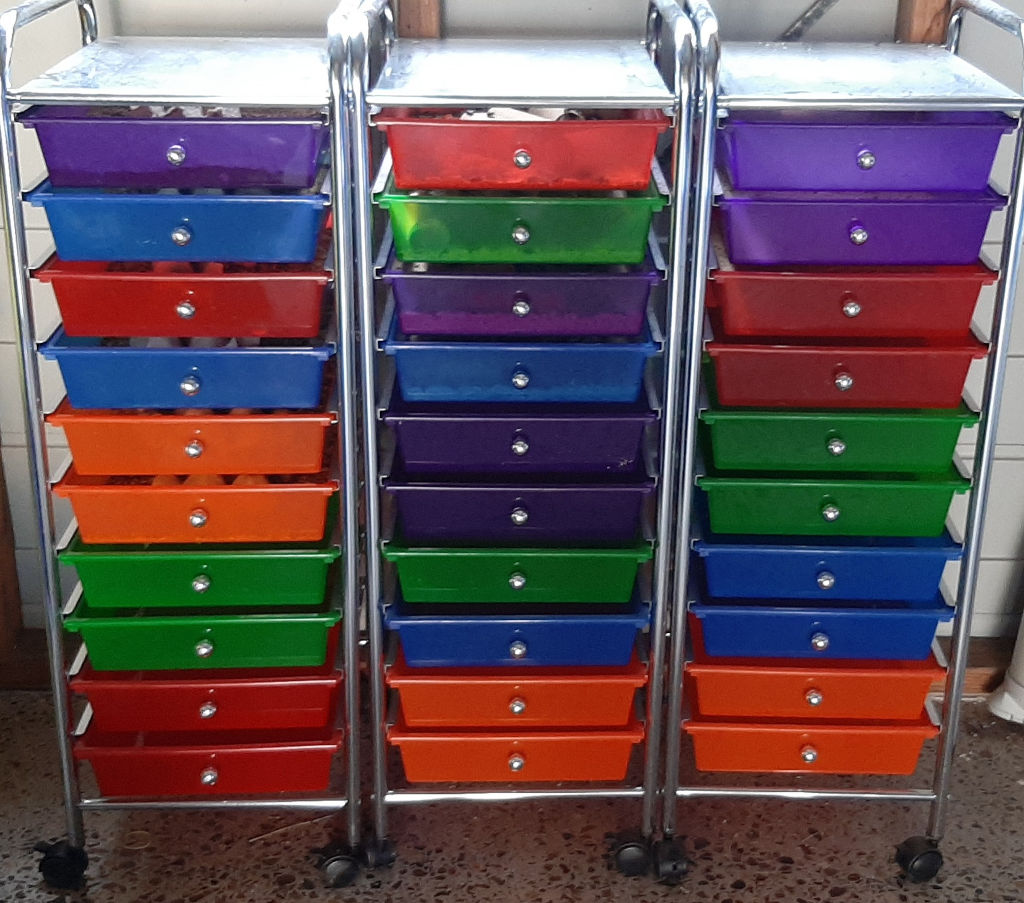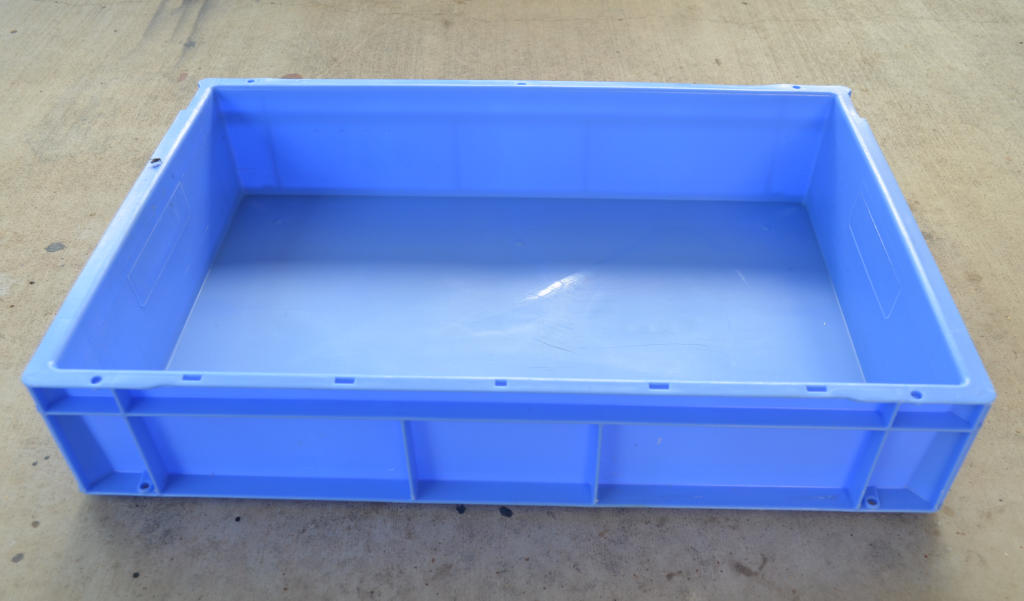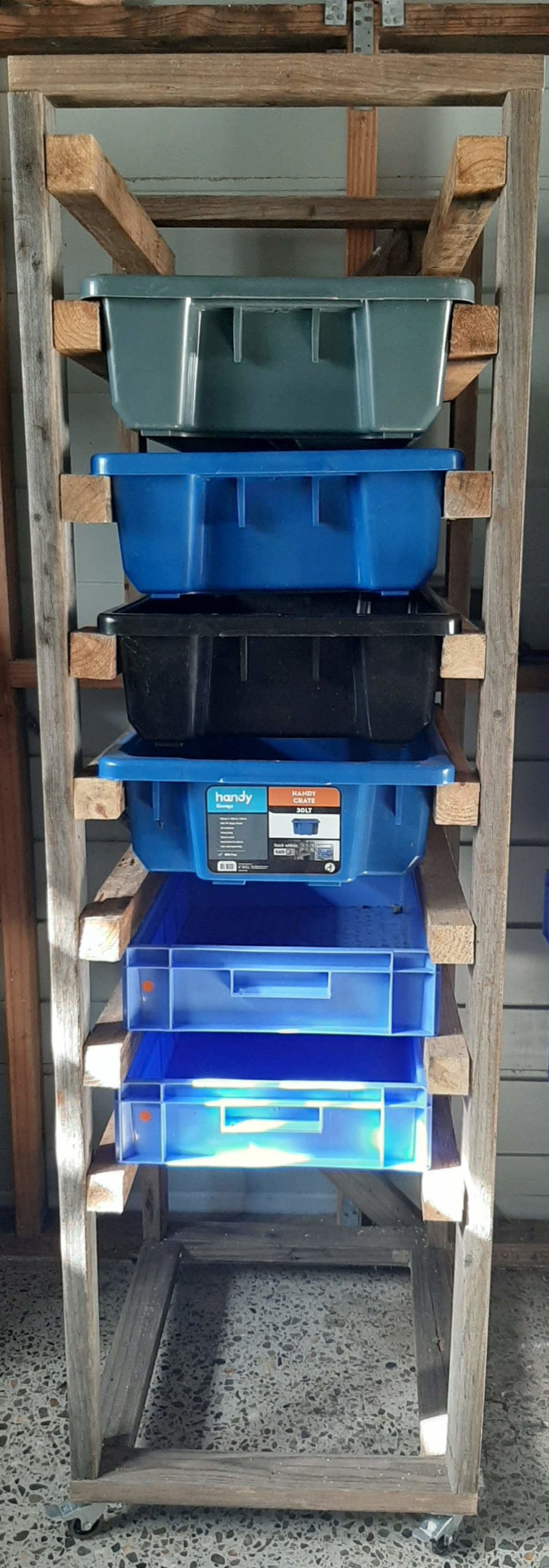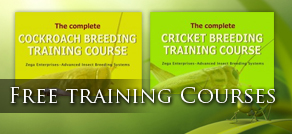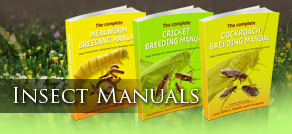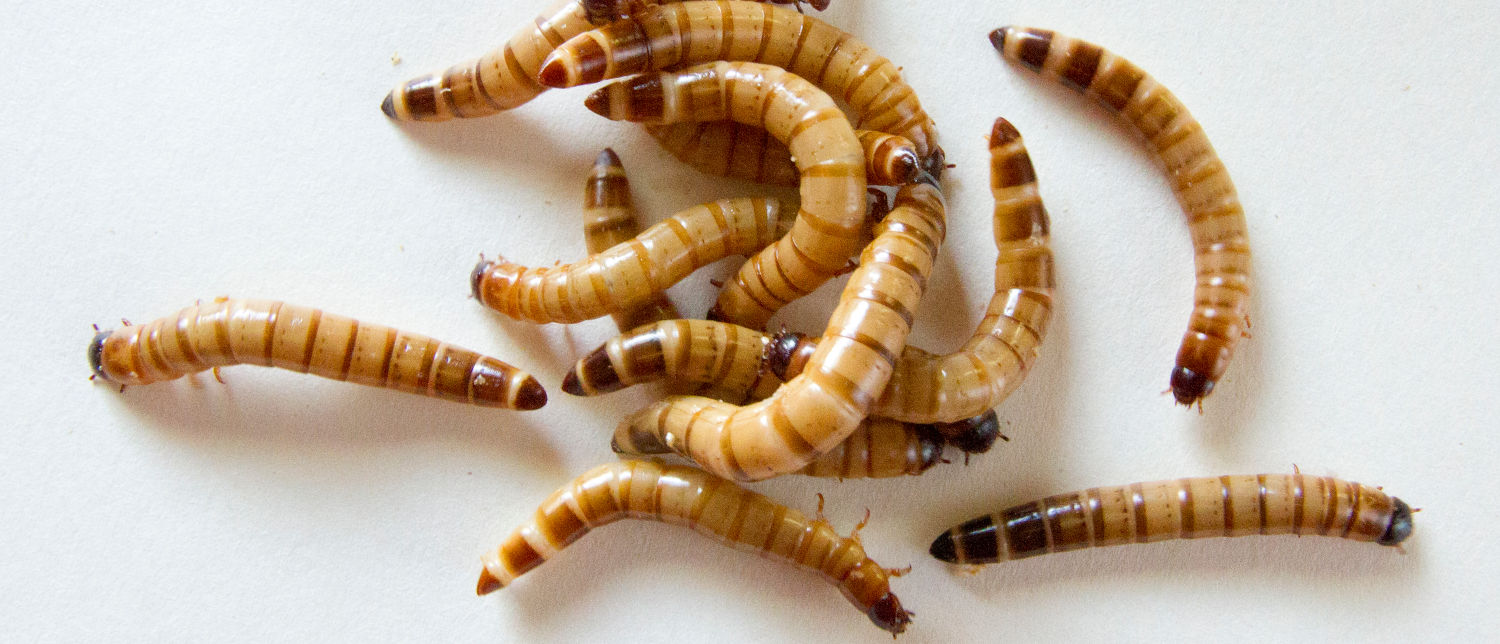
Some Basic Materials and you are on your way to saving money!
See why our books are the most Comprehensive Here.
How Many Containers do I Need
To begin your colony you will need a minimum of 3 containers, however it is recommended to have 4 to improve the separation of small and large mealworms. More containers can be added as required to handle your requirements.
It is essential you separate the lifecycles to avoid cannibalism. For more details visit our Mealworm Lifecycle page [insert link to this page when uploaded]. The good news is all stages of the mealworm lifecycle can use the same type of container.
Container 1– Houses your large mealworms and contains 2-3 inches of mealworm substrate.
Container 2– Houses pupa and beetles. It also containers 2-3 inches of mealworm substrate. To prevent cannibalism both the pupa and beetles need to be separated. This can be done by placing an egg carton on top of the mealworm substrate and place the pupa into this (more on this later).
Container 3- Houses the baby mealworms which have just hatched from the mealworm substrate. As you will learn later this container originally had beetles which were removed so they would not eat the eggs and mealworms.
Container 4- (optional but recommended to separate small and large mealworms)– Houses medium mealworms and mealworm substrate.
How do I Build a Container
As shown in the photos, containers are generally one of two types. 1) Multi-draw units which have containers that can be pulled out. 2) Free standing containers or tubs with a lid.
Below are some tips for choosing a container:
- It must have a large surface area and have smooth sides to prevent them from escaping.
- Plastic containers are best as they are light, impervious to moisture and easily cleaned.
- A lid is not essential but it will prevent pests such as spiders and geckos from eating your mealworms.
- The lid should have sufficient ventilation holes. This can be done by cutting out the center of the lid and replace it with fly mesh and attaching it with a hot glue gun, rivets or construction adhesive.
- Enough height to prevent them crawling out. Six inches will provide sufficient height for placing 2-3 inches (5-8cm) of substrate and to prevent them from escaping.
How Many Mealworms do I Need to Start
- If you don’t intend to use your mealworms whilst they are establishing, you can buy as little as 100-200 mealworms.
- If however you plan to feed your animals as the colony grows you will need a lot more, probably around 2000-4000 to start with. This however will change depending on our requirements for mealworms.
The Worlds most Comprehensive Mealworm Breeding Guide and Webinar Series
As part of the Mealworm book project we renovated a 6m (20 foot) caravan into an insect business which breeds Mealworms, crickets and Woodies. We have bench marked all build costs, operation costs (energy, food, time).
“The Complete Mealworm Breeding Manual ” which will greatly increase your knowledge of how to breed mealworms and super worms with greater consistency and ease. As with all our Feeder Insect Book Series, we will overhauled every aspect of mealworm production including…
- Commercial and small Scale production, both yellow and super/giant mealworms.
- Breeding
- Food and water requirements
- Making food and moisture requirements
- Heating/storage
- Container design
- Maintenance/pest management,
- Cleaning and maintenance
- Grading/selling/commercial production
- Lots and lots more!!
We will show you the commercial tips and tricks to breed a productive and low maintenance mealworm colony. Click Here for more about the “Mealworm Manual Project” and to view the books contents.
Free Cricket Breeding Course
For more information on how to breed crickets, get your free 9 lesson today. This training course has videos and lots of useful information which covers:
- How a conventional cricket breeding system works
- How our proprietary cricket breeding system works
- Cricket biology
- Container design
- Feeding, gut loading
- Heating
- Pest management and lots more…
Why not Turn an Expense Into Income?
For Information and advice on commercial production, Click Here. We have been breeding insects to Zoos, Wildlife carers, pet stores and the public for over 14 years.
We can show you how to build a profitable insect business. See below how you can follow our latest project converting a 20 foot caravan into a profitable insect business.
